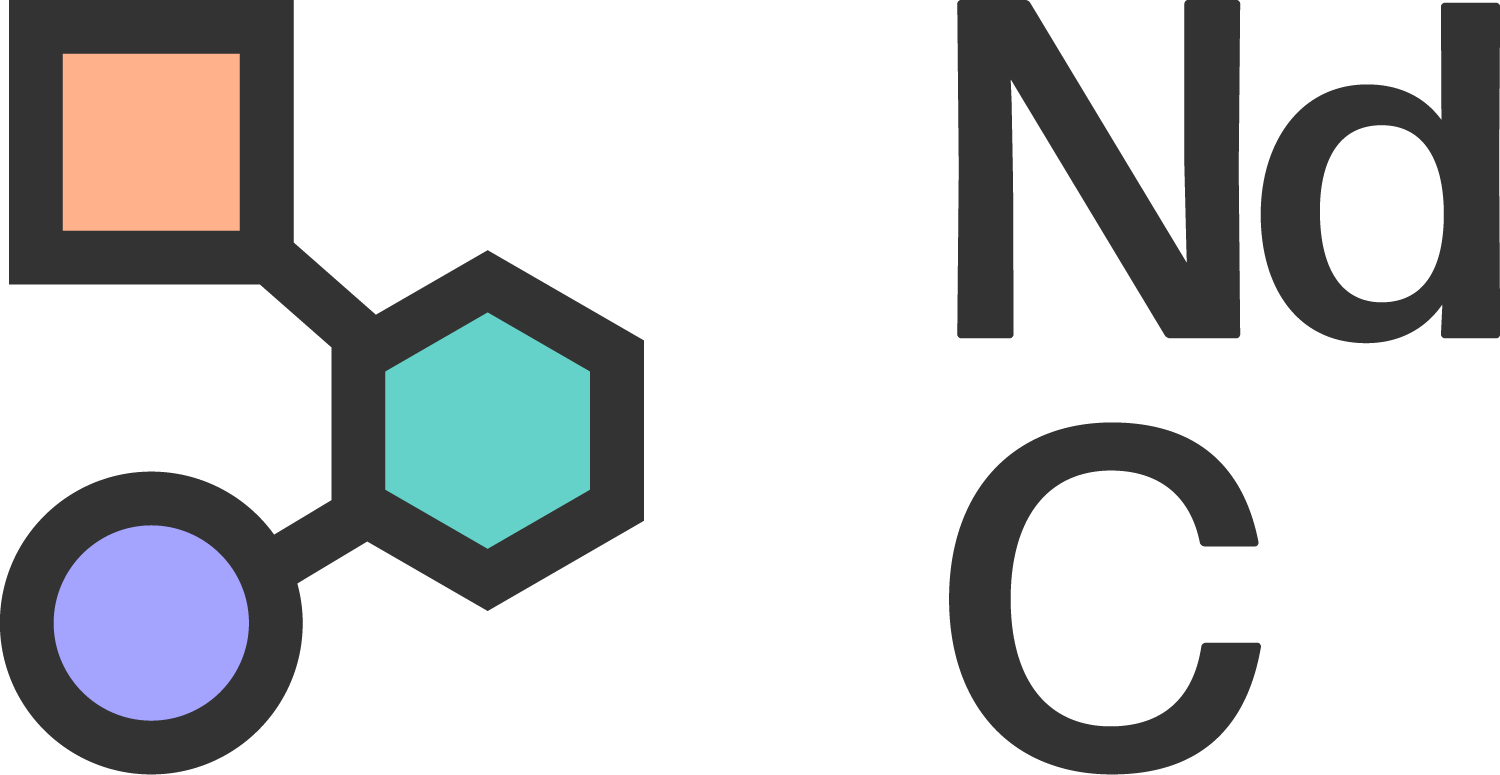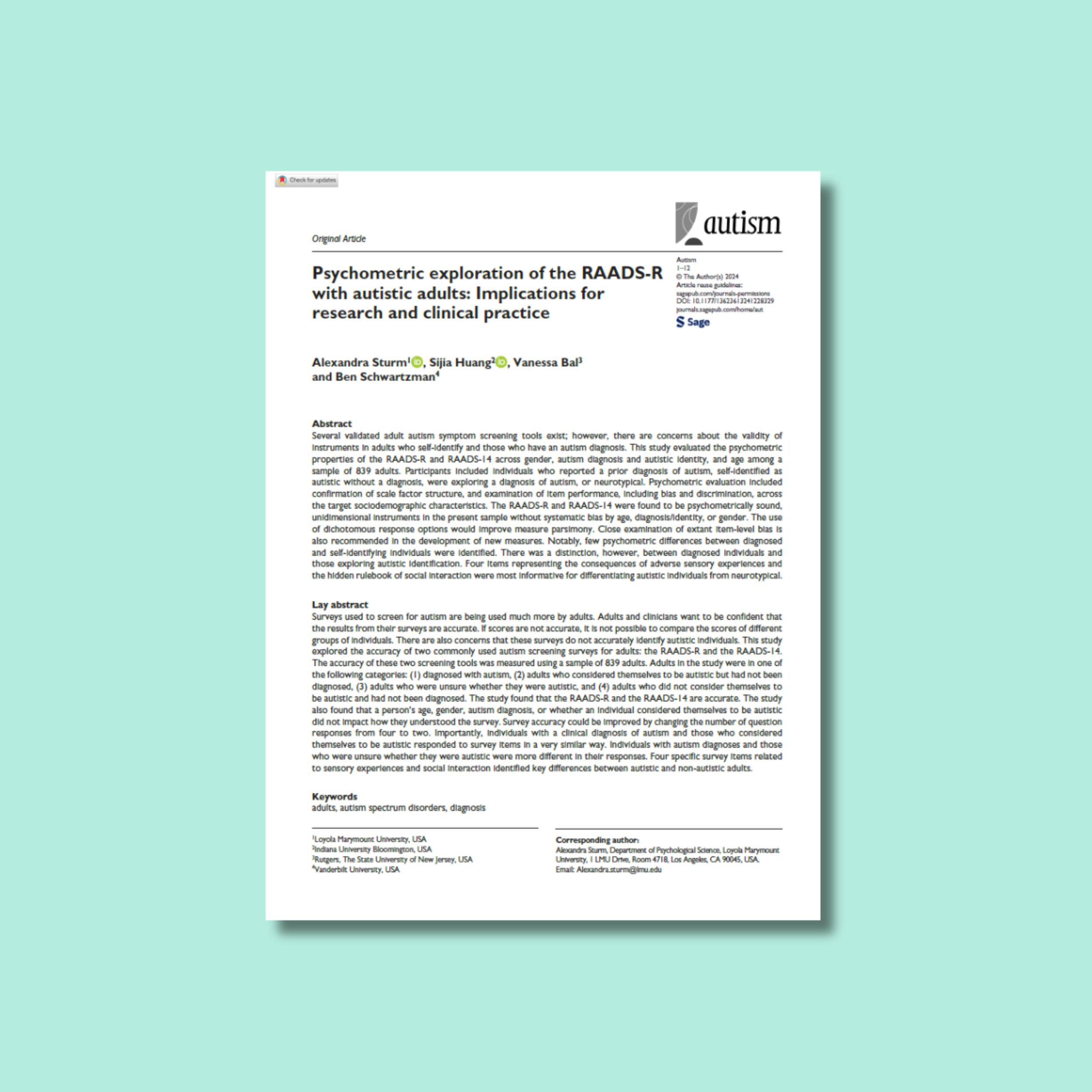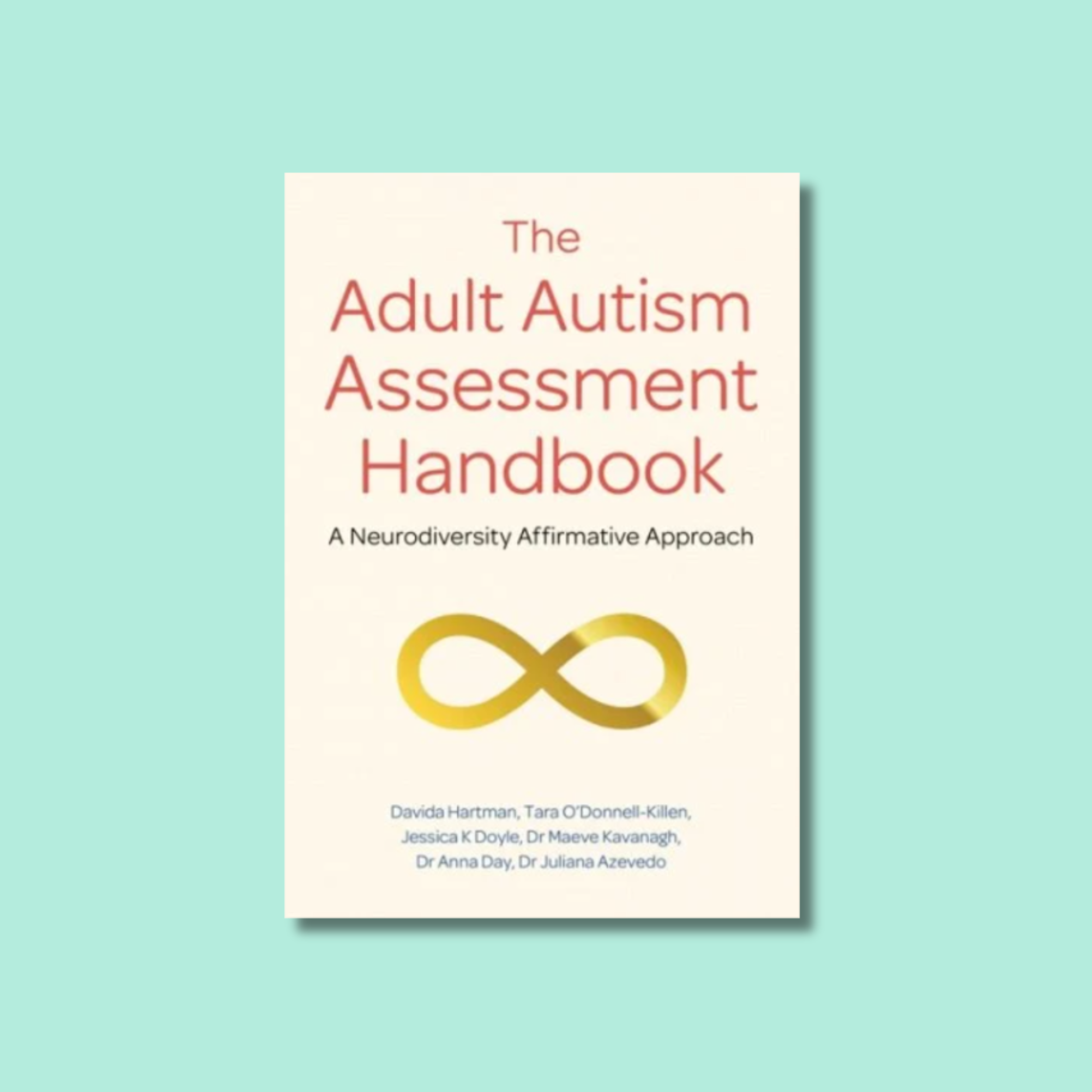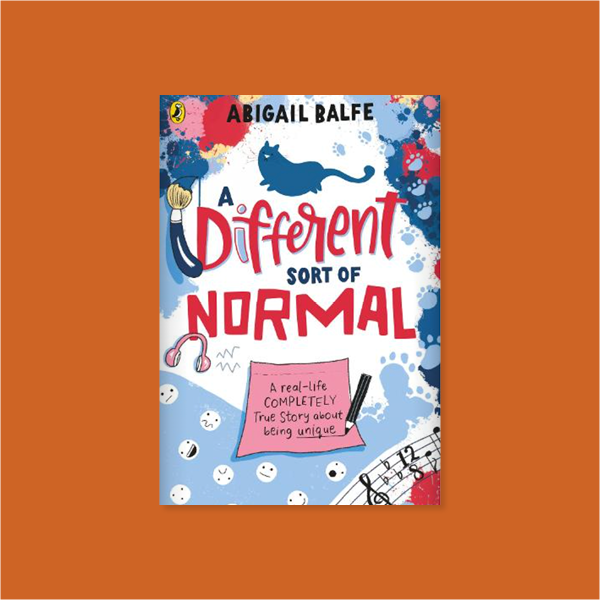 Image 1 of 1
Image 1 of 1


Centering the Inner Experience of Autism: Development of the Self-Assessment of Autistic Traits
Ratto et al. (2023)
Current autism identification tools often lack specificity and sensitivity, particularly for older autistic individuals, those with higher verbal abilities, and people who are not cisgender boys. The authors suggest this is due to a historical focus on white, cisgender, middle- and upper-class boys, a limited engagement with autistic lived experiences, and the dominance of deficit-based models. This article presents the development of a new clinical self-report tool— the Self-Assessment of Autistic Traits (SAAT)—designed collaboratively by two autistic researchers and a diverse group of autistic individuals. Through iterative feedback from a panel of autistic experts, the measure was refined to better reflect the autistic experience. Aimed at people aged 16 and over, SAAT is intended to be more accessible and meaningful for autistic respondents, with the long-term goal of improving how autism is understood and assessed in clinical settings.
Ratto et al. (2023)
Current autism identification tools often lack specificity and sensitivity, particularly for older autistic individuals, those with higher verbal abilities, and people who are not cisgender boys. The authors suggest this is due to a historical focus on white, cisgender, middle- and upper-class boys, a limited engagement with autistic lived experiences, and the dominance of deficit-based models. This article presents the development of a new clinical self-report tool— the Self-Assessment of Autistic Traits (SAAT)—designed collaboratively by two autistic researchers and a diverse group of autistic individuals. Through iterative feedback from a panel of autistic experts, the measure was refined to better reflect the autistic experience. Aimed at people aged 16 and over, SAAT is intended to be more accessible and meaningful for autistic respondents, with the long-term goal of improving how autism is understood and assessed in clinical settings.






